 Western pond turtle, about to pounce. (Photo: Ryan Hawk/Woodland Park Zoo)
Western pond turtle, about to pounce. (Photo: Ryan Hawk/Woodland Park Zoo)
If you are eaten by a Western pond turtle on the way home today, you will likely have the Woodland Park Zoo to blame. (The zoo, your insect-like size, and the fact that you commute home through a pond. If, on the other hand, you try to eat them, you may be a large-mouth bass or bullfrog.)
Western pond turtles (Emys marmorata) are an endangered species, so as part of a "head start" reintroduction program, biologists from Washington Department of Fish and Wildlife and Woodland Park Zoo are releasing 19 turtles into the vast wilderness that is Pierce County. 57 more will find themselves taking in the ponds of the Kitsap Peninsula.
It's all happening right about now, this very morning. But it began ten months ago, when the wee turtles hatched in the wild, and were gathered up to get a "head start" in the safer confines of Woodland Park Zoo. Now that they weigh in at about 2 ounces, they should be big enough to flee from hungry bullfrogs and large-mouth bass. And if not, hey, circle of life. Those bass didn't ask to be born with large mouths to feed.
Says the zoo:
Western pond turtles were once common from Baja California to Puget Sound, including the Columbia River Gorge. However, loss of habitat, disease and predation by non-native species such as bullfrogs decimated their numbers. They were on the verge of extinction in Washington in 1990, with only about 150 turtles left in the wild. Habitat degradation and disease were, and still are, problems, but the biggest threat to fragile baby turtles is the bullfrog. The state listed western pond turtles as endangered in 1993. ...
(more)
The New York Times seems delighted to dispel any remaining myths about the untouched natural beauty of Washington state. Just this week readers have learned that there's three times the amount of plutonium waste at Hanford as "thought," and that the Puget Sound's pH level is declining in part due to ocean acidification and the water is growing more corrosive. (Thanks. We'll be expecting a make-up "36 Hours in Seattle," soon.)
The Seattle Times goes straight to the pH-decline bottom line: the impact on the Puget Sound shellfish industry.
The Taylor Shellfish hatchery on Hood Canal's Dabob Bay had its first good year in several in 2009, but company spokesman Bill Dewey said he suspects that's merely because the winds cooperated, preventing acidified seawater from entering the relatively stable bay.
The company recently installed sophisticated pH monitors at its hatchery to determine when it's best to draw water off the surface, from way down deep—or not at all.
In an earlier story, from January this year, the Seattle Times looked at the cause-and-effects of ocean acidification in general. The world's oceans act as a carbon dioxide sink, claiming excess CO2 from the atmosphere, but CO2 dissolved in water creates a weak acid solution. It turns out that shellfish larvae, for one, are very sensitive to changes in pH.
The new study on the Puget Sound's ocean-acidification intake represents the work of researchers with NOAA, the University of Washington, and the state's Department of Ecology. (It's published in the latest issue of Estuarine, Coastal and Shelf Science.) The researchers make it clear that the Sound is struggling mightily with the human activity around it--the toxic pollution and "nutrient-rich" flows that are channeled into it, both killing off life and promoting algae blooms that...also kill off life....
Coal, you may be surprised to learn, here in the cradle of hydroelectric power, supplies about eight to ten percent of Washington's electricity. That's thanks to a single coal-fired plant in Centralia, owned since 2000 by Canada's TransAlta, proponents of "the greening of power generation." Not coincidentally, the plant was also responsible for "11 percent of the state’s 99 million metric tons of carbon dioxide equivalents (MMT CO2e) in 2008."
(Speaking of green, Seattle can feel smug about the fact that Seattle City Light gets over twice as much electricity from wind power as from coal.)
This week, after months of negotiation, the Department of Ecology and TransAlta announced an Agreement and Consent Decree that will govern the plant's emission of smog-producing pollutants and mercury vapor. Essentially, Ecology (as the department troublingly synechdochizes itself) argues that it got the best voluntary deal from TransAlta it could, and on a faster implementation timeline, than if it instituted mandatory requirements. Sightline sighs in exasperation at this, along with a host of conservation and environmental groups.
Mercury emissions are to be reduced by half by 2012. (Half of what? The Ecology staffer I spoke with didn't have the precise numbers in front of him, but elsewhere in the agreement documentation there's reference to cutting mercury emissions by 200 pounds--indicating 400 pounds of mercury are released annually. [See UPDATE below.]) To be fair, TransAlta thinks they may achieve 70 percent--they just wanted some regulatory cushion, apparently.
TransAlta's existing controls for haze-causing pollutants will be deemed "good enough." TransAlta says they've invested $300 million in pollution controls since they took over the plant, reducing sulfur dioxide emissions by up to 90 percent. (They've also stopped burning Centralia coal and switched to cleaner-burning stuff from Powder River Basin.)...
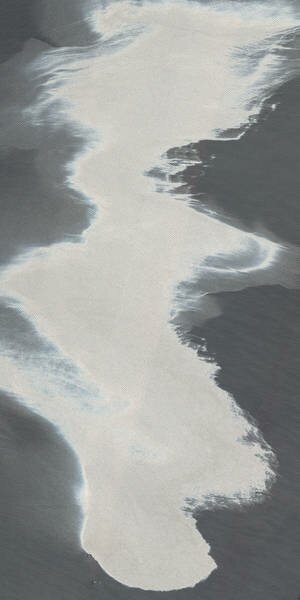 Northwest bloggers with environmental leanings have been watching developments in the Gulf of Mexico closely--with a sinking feeling at the scope of the disaster, mingled with outrage at having seen this coming from many miles away. (Even meteorologist Cliff Mass joined in, posting pictures of the spill from NASA's AQUA satellite.)
Northwest bloggers with environmental leanings have been watching developments in the Gulf of Mexico closely--with a sinking feeling at the scope of the disaster, mingled with outrage at having seen this coming from many miles away. (Even meteorologist Cliff Mass joined in, posting pictures of the spill from NASA's AQUA satellite.)
Each day after the oil rig exploded and sank, killing eleven workers, a broken pipe has been spewing something like 5,000 barrels of oil per day (210,000 gallons), creating a slick of more than 2,000 square miles. Initial estimates of 1,000 barrels per day have since risen to 5,000, and one analyst puts the outflow at 20,000 barrels, covering 4,400 square miles.
Grist quotes Republican governor Charlie Crist: "If this doesn't give somebody pause, there's something wrong," in contrast to the White House's continued support for offshore drilling, including Alaska. The White House has declared this spill of "national significance," which means that federal resources can be used.
Sightline's Eric de Place couldn't believe that the "best" option for spill containment could be setting it on fire. (And don't get him started on President Obama's moving beyond "tired debates.")
But even that scorched-water strategy isn't foolproof: the New York Times reports, "sea and wind conditions prevented officials from executing a controlled burn of some of the floating oil" and the spill will reach the Mississippi Delta by tonight or tomorrow.
Images: Gulf oil spill, by the Moderate Resolution Imaging Spectroradiometer (MODIS) on NASA’s AQUA satellite. Credit: NASA Earth Observatory/MODIS Rapid Response Team
Bill Gates' TED talk has hit the internet--it's almost 30 minutes (Gates speaks for about twenty, and then there's a Q&A), so the majority of people will likely not make it all the way through it before needing to look busy at work. Luckily, other people have watched the whole thing, and they have responded, so you can sound up-to-speed anyway.
Probably the most important element of the talk for environmental listeners is Gates' focus on the scope of change that needs to happen. He's been criticized in the past for limiting his philanthropic focus--which people take as a kind of emphasis on what needs to be done, globally--so that climate change and carbon reduction seems blanketed by an SEP field. That is no longer the case.
World Changing's Alex Steffen said:
Friday, Gates predicted extraordinary climate action: zero. Not small steps, not incremental progress, not doing less bad: zero. In fact, he stood in front of a slide with nothing but the planet Earth and the number zero. That moment was the most important thing that has happened at TED....
(more)
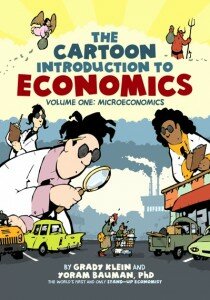 Economist Yoram Bauman likes to paraphrase P.J. O'Rourke when you ask him the difference between microeconomics and macroeconomics: "Microeconomists are wrong about specific things, and macroeconomists are wrong about things in general." He likes that take so much, it's right there on page nine of his book, The Cartoon Introduction to Economics.
Economist Yoram Bauman likes to paraphrase P.J. O'Rourke when you ask him the difference between microeconomics and macroeconomics: "Microeconomists are wrong about specific things, and macroeconomists are wrong about things in general." He likes that take so much, it's right there on page nine of his book, The Cartoon Introduction to Economics.
He elaborates, though, if you continue to stare quizzically at him.
"Microeconomics deals generally with small scale things, individual markets, while macroeconomics deals with big-picture issues: unemployment, inflation, the business cycle, economic growth." An environmental economist, Bauman teaches at the UW's interdisciplinary-oriented Program on the Environment, at the sustainability-oriented Bainbridge Graduate Institute, and at wealthy-parent-oriented Lakeside High School.
When you read, for example, that climate change may cost the state of Washington almost $4 billion by 2020, you're in Bauman's wheelhouse. To him, the public's struggle to get our heads around environmental economics follows from a long and storied tradition of ideological tension between free-marketeers and regulatory pressures. "A lot of what you see on TV are the extremes, you have the Heritage Foundation, who are like, 'We just need freer markets!' or the other side, who say, 'We need government involvement in lots of things.'"
And then there's the tension between people who can't imagine things being possible, and those who can. Privatize the post office, you say? It's too large and complicated. To which the economist replies with Leonard Read's story about how the pencil is made. In the decades it has been impossible to privatize the post office, FedEx, DHL, and UPS have all revolutionized the logistics of delivery, while the post office has catered to bulk mailers (where almost 40 percent of its revenue comes)....
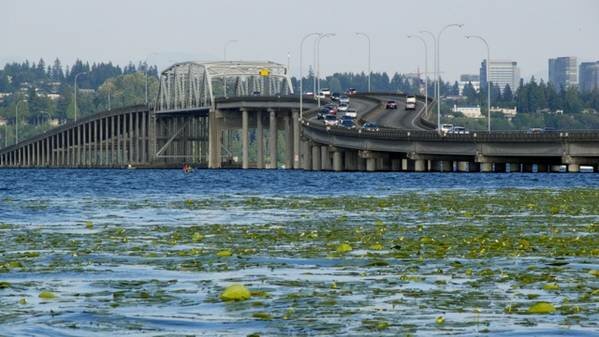 520: Can't live with it, can't get a redesign consensus.
520: Can't live with it, can't get a redesign consensus.
In our thirteenth year of 520 replacement design talks, the City Council has found none of the designs acceptable, and has asked, in a letter [pdf] to Gov. Gregoire, Sen. Mary Haugen, and Rep. Judy Clibborn, for four months to make tweaks. They're looking for dedicated transit lanes, a smaller profile, and better transit connectivity. In fairness, no one loves the new 6-lane designs, not Mike McGinn, Frank Chopp, Jamie Pedersen, nor the residents of Montlake--it's just what the people who wanted four and the people who wanted eight lanes can grudgingly agree on.
It seems like every Friday is bank seizure day, doesn't it? Yesterday regulators seized Bainbridge's American Marine Bank and sold it to Tacoma's Columbia State Bank. The Puget Sound Business Journal story notes that American Marine is the sixth Washington bank to fail since 2009, that Columbia Bank also recently bought Columbia River Bank, in Oregon, and that as of Q4 2009, Columbia Bank had almost $130 million in nonperforming loans itself.
On the bright side, "we are now experiencing the warmest January in Seattle recorded history!" according to Cliff Mass, who is a scientist and should know. He adds that: "Not a single day has had a mean temperature below normal." Our monthly mean temperature should come out to about 47 degrees, and for the foreseeable future, all our winter weather is headed California's way, thanks to El Niño.
Youth crime continues to rattle people: a 15-year-old beat a Metro bus driver into unconsciousness, and a student assaulted a teacher at Cleveland High. State Sen. Pam Roach made the news twice, first for browbeating Bellevue Police Chief Linda Pillo, on behalf of assault weapons, and second for being banned from the GOP caucus and being urged to get anger management counseling. Roach says she's being "persecuted" by Republican leadership. (God, I know that feeling, Pam.)...
 Maybe if stormwater wasn't so pretty and shimmery, we'd be more upset about what run-off does. But who doesn't love an oily puddle rainbow?
Maybe if stormwater wasn't so pretty and shimmery, we'd be more upset about what run-off does. But who doesn't love an oily puddle rainbow?
Even if you recognize there's a threat, you're still just one person. Against rain. In the Pacific Northwest. Good luck with that, Noah.
Sightline's stormwater report acknowledges these truths. They give you the scope--a single Puget Sound home produces over 26 thousand gallons of run-off each year-- subtitle the horror story "Stormwater's costly and toxic cocktail," and talk about "what you can do."
Still, you and I and The Onion know how we think. If we were neo-hippies and lived in Fremont and derived a great deal of our identity from nagging other people about their wastefulness, we might think about painting a rain barrel with a Day-Glo mandala, sure. That soft rainwater is just what Dr. Bronner ordered!
That's why it's cheering to see a Seattle Metropolitan story on rain gardens. What we need to hear is, "It’s a nice oasis." Why? Because this environment thing is a leaky boat. Seattle has a great recycling percentage, we almost banned plastic bags, and not only did we screw in a bunch of CFL light bulbs, but we're going to take the dead ones back to Bartell's, too.
Each of these things requires personal effort--each draws from the limited fund of attention we can give to monitoring our "bad" behavior. And looking around, it's easy to see we'll be running crushing mental deficits far before we get this sustainable thing off the ground. (It's also why guiding principles are better than regulating homeowners into frustrated immobility, but that's another post.)
Doing something that just works better, by contrast, requires none of that sustained, best-behavior hall-monitoring. You go to a home show in Tacoma or Seattle, you get a sense of what a rain garden can do for you, you learn that Seattle will help pay you to install one--suddenly it's not a battle. A backyard "oasis" that keeps your basement from flooding and gives you neighborhood bragging rights? Bring it, Fremont rain-barrellers!...
Mount Rainier's glaciers have shrunk by more than 25 percent in the past 50 years, says the Seattle Times in a story on the effects of melting glaciers. One of those effects is rivers choked by rock (and debris slides closing park roads).
It's not just glacial melt, either: "According to stream-flow data, what was once a 100-year flood on the Nisqually River now occurs every 14 years." Records show that the bed of the river is almost 40 feet higher today than in 1910 because of sediment and gravel collection.
The retreating glaciers are of particular concern in our neck of the woods because their runoff provides drinking water and hydroelectric power.
In the 1950s, forty million gallons of raw sewage poured into the Puget Sound every day, so last night's 10-million-gallon slip-up at the West Point Treatment Plant is, in historical context, not that bad. (West Point handles about 130 million gallons of wastewater per day, so the three-hour deluge of sewage is estimated at around 10 million.)
"This situation is unacceptable," the Seattle Times quotes Christie True, director of King County's Wastewater Treatment Division, saying. "Finding out why it occurred is the first step toward taking corrective measures so we can prevent it from happening again." (Ah, the old "faulty sensor is at fault" explanation.)
If you haven't been following sewage treatment news, that might sound reassuring, but it comes on the heels of a 2008 EPA investigation showing that "in 2007 Seattle's sewer system overflowed 249 times, and King County's system overflowed 87 times." Add to that the regular oily run-off from roads, says the Northwest Progressive Institute, and you get a nasty, 1.94-billion-gallon, year-round cocktail.
While we have official assurance that this kind of thing won't create toilet geysers, the ugly truth is that it's turning the waterways of Puget Sound into an outdoor toilet. Sightline's blog series about stormwater combines horror ("Jesus-walking salmon"), regret ("Runoff contributes 35 times more mercury to Puget Sound than industrial polluters"), and possible responses ("conifers in our region can catch about one-third of the rainfall").
But yes, this situation is unacceptable.
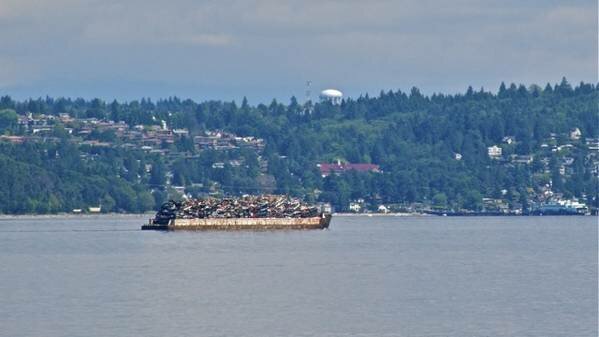
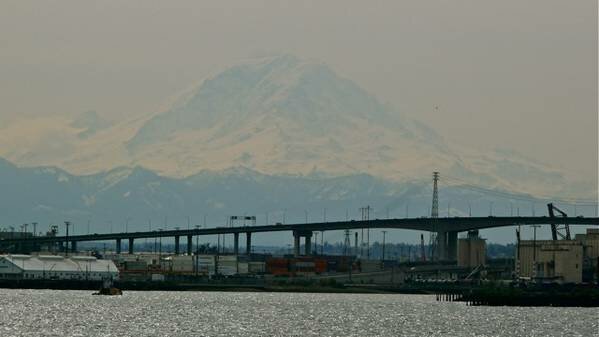
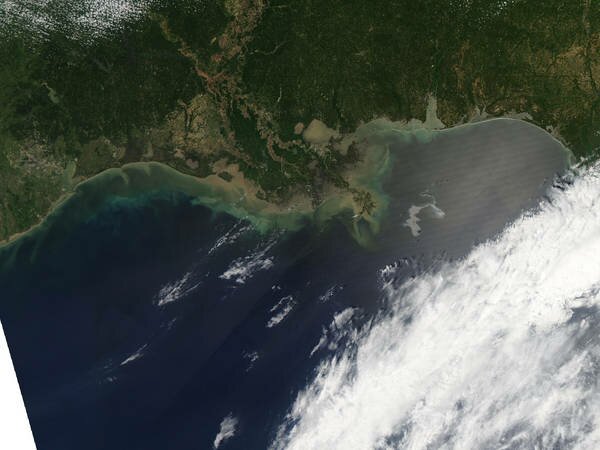
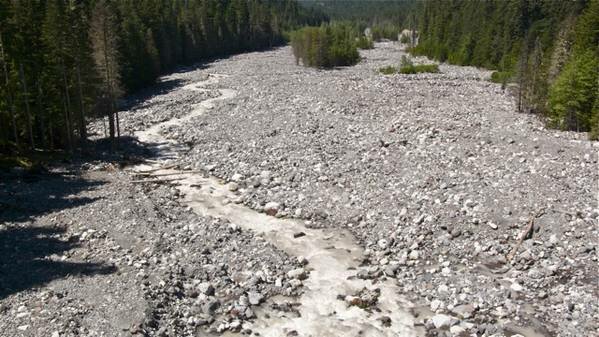
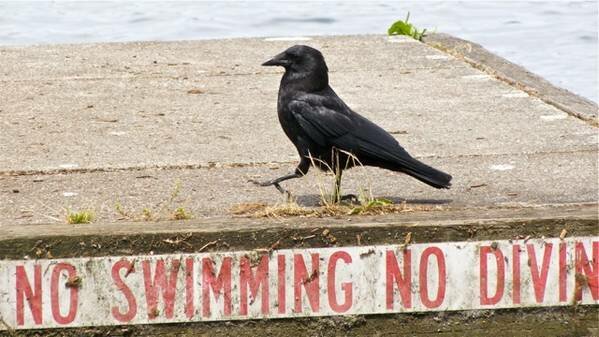

Most Recent Comments